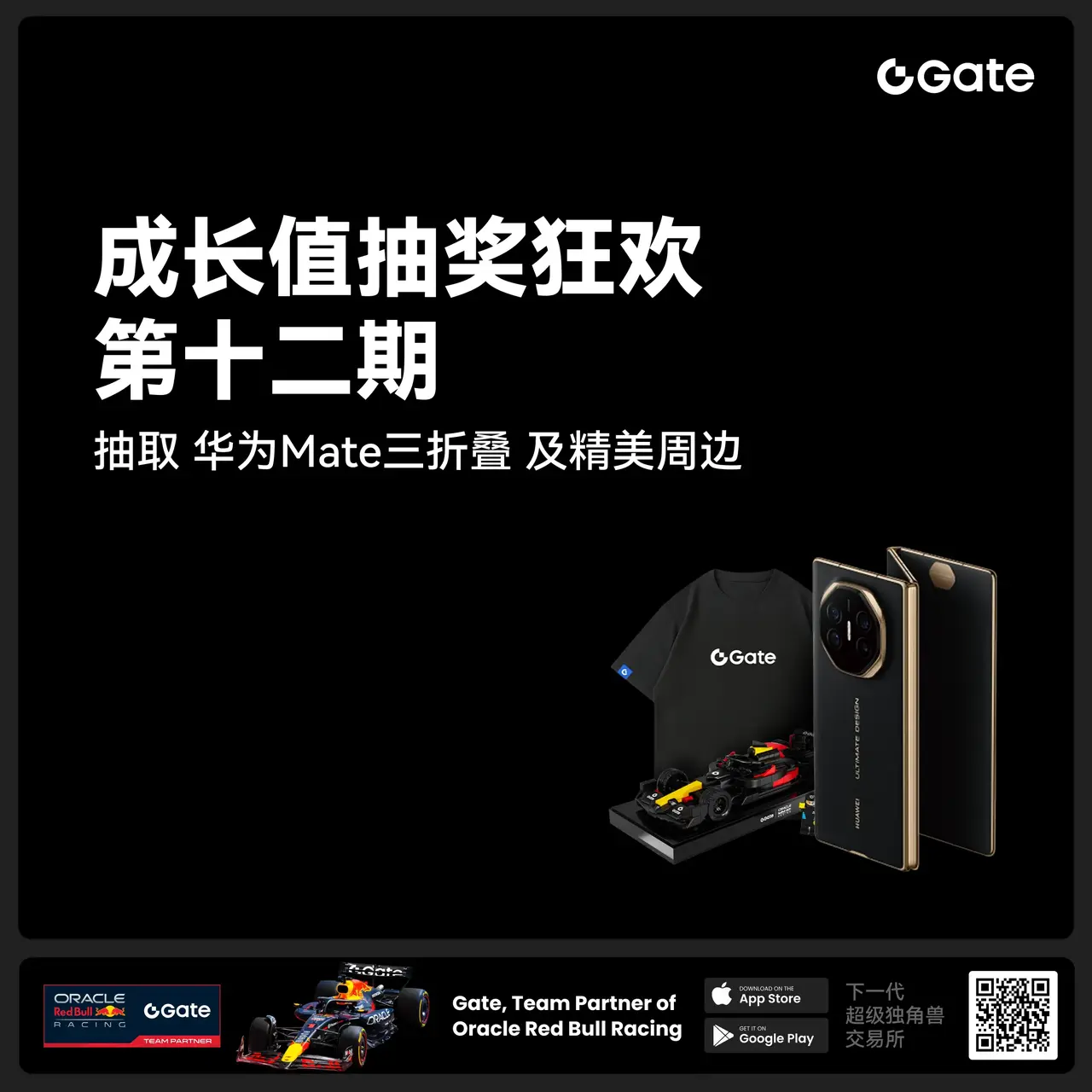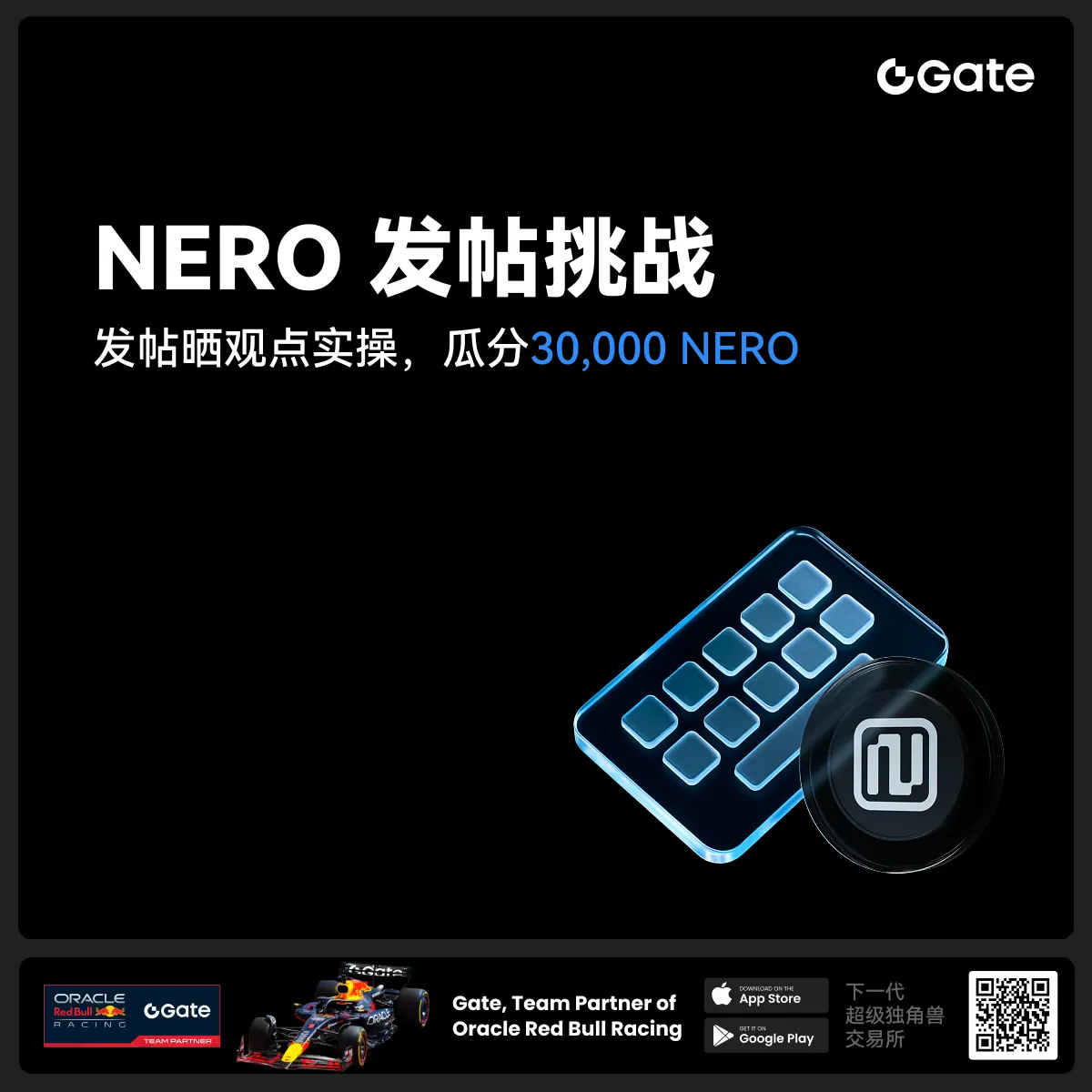- 话题1/3
17k 热度
145k 热度
2k 热度
25k 热度
92k 热度
- 置顶
- 🎉 #CandyDrop合约挑战# 正式开启!参与即可瓜分 6 BTC 豪华奖池!
📢 在 Gate 广场带话题发布你的合约体验
🎁 优质贴文用户瓜分$500 合约体验金券,20位名额等你上榜!
📅 活动时间:2025 年 8 月 1 日 15:00 - 8 月 15 日 19:00 (UTC+8)
👉 活动链接:https://www.gate.com/candy-drop/detail/BTC-98
敢合约,敢盈利
- 🎉 攒成长值,抽华为Mate三折叠!广场第 1️⃣ 2️⃣ 期夏季成长值抽奖大狂欢开启!
总奖池超 $10,000+,华为Mate三折叠手机、F1红牛赛车模型、Gate限量周边、热门代币等你来抽!
立即抽奖 👉 https://www.gate.com/activities/pointprize?now_period=12
如何快速赚成长值?
1️⃣ 进入【广场】,点击头像旁标识进入【社区中心】
2️⃣ 完成发帖、评论、点赞、发言等日常任务,成长值拿不停
100%有奖,抽到赚到,大奖等你抱走,赶紧试试手气!
截止于 8月9日 24:00 (UTC+8)
详情: https://www.gate.com/announcements/article/46384
#成长值抽奖12期开启#
- 📢 Gate广场 #NERO发帖挑战# 秀观点赢大奖活动火热开启!
Gate NERO生态周来袭!发帖秀出NERO项目洞察和活动实用攻略,瓜分30,000NERO!
💰️ 15位优质发帖用户 * 2,000枚NERO每人
如何参与:
1️⃣ 调研NERO项目
对NERO的基本面、社区治理、发展目标、代币经济模型等方面进行研究,分享你对项目的深度研究。
2️⃣ 参与并分享真实体验
参与NERO生态周相关活动,并晒出你的参与截图、收益图或实用教程。可以是收益展示、简明易懂的新手攻略、小窍门,也可以是行情点位分析,内容详实优先。
3️⃣ 鼓励带新互动
如果你的帖子吸引到他人参与活动,或者有好友评论“已参与/已交易”,将大幅提升你的获奖概率!
NERO热门活动(帖文需附以下活动链接):
NERO Chain (NERO) 生态周:Gate 已上线 NERO 现货交易,为回馈平台用户,HODLer Airdrop、Launchpool、CandyDrop、余币宝已上线 NERO,邀您体验。参与攻略见公告:https://www.gate.com/announcements/article/46284
高质量帖子Tips:
教程越详细、图片越直观、互动量越高,获奖几率越大!
市场见解独到、真实参与经历、有带新互动者,评选将优先考虑。
帖子需原创,字数不少于250字,且需获得至少3条有效互动
- 🎉 亲爱的广场小伙伴们,福利不停,精彩不断!目前广场上这些热门发帖赢奖活动火热进行中,发帖越多,奖励越多,快来GET你的专属好礼吧!🚀
1️⃣ #GateLaunchpad上线IKA# |IKA认购体验
在Gate广场带话题晒出你的IKA Launchpad认购体验,4位幸运分享者讲瓜分$200分享奖池!
详情 👉️ https://www.gate.com/post/status/12566958
2️⃣ #ETH冲击4800# |行情分析预测
大胆发帖预测ETH走势,展示你的市场洞察力!10位幸运用户将平分0.1 ETH 奖励!
详情 👉️ https://www.gate.com/post/status/12322403
3️⃣ #创作者活动第二期# |ZKWASM话题
在广场或推特发布与 ZKWASM 或其交易活动相关的原创内容,瓜分4,000枚ZKWASM!
详情 👉️ https://www.gate.com/post/status/12525794
4️⃣ #Gate广场征文活动第二期# |ERA话题
谈谈你对ERA的观点/体验,参与并推广活动,700 ERA大奖等你赢!
详情 👉️ https://www.gate.com/post/status/12361653
5️⃣ #MBG任务挑战# |MBG话题
分享你对MBG的洞察,积极参与和推广MBG活动,20位小
Is IOTA Now Fully Decentralized with the Stardust Upgrade? An In-Depth Look at Coordicide and the Bright Future
On Tuesday, September 12, the IOTA protocol made major headlines after it unveiled the plans to upgrade the IOTA mainnet. The announcement involves the degradation of the IOTA mainnet Coordinator to a decentralized permission Validator Committee.
The Committee comprises multiple validators running on different host providers and locations. In addition to increasing network uptime and stability, it also provides censorship resistance by allowing external entities to be part of the Validator Committee.
Blockchain researcher Collin Brown said that the Stardust upgrade brings a major shift with the Coordinator transformed into the Validator Committee.
The forthcoming upgrade, known as Stardust, will introduce several fundamental alterations to the IOTA network. This includes the replacement of the Coordinator with the Validator Committee. To ensure the smooth deployment and operation of the Validator Committee, the IOTA protocol has already implemented and tested the new protocol on the ShimmerNet. It’s important to emphasize that the mainnet, is not the permanent home for the Validator Committee, as its true purpose aligns with Coordicide.
Addressing the challenges With IOTA Coordinator
The current Coordinator functions as an arbiter within the IOTA network, responsible for validating transactions in periodic batches. This is achieved by issuing milestones that nodes accept as confirmation for the transactions they’ve verified. While this approach enhances security, it also means that the Coordinator has the potential to hinder transactions if milestones are set in specific ways. Furthermore, if the Coordinator becomes inaccessible, the accepted confirmation of transactions is lost, causing the network to halt processing value transactions until the Coordinator resumes its functions.
To address these challenges, we are implementing an upgrade, transitioning from the current Coordinator to a decentralized Validator Committee. This change eliminates the reliance on a single Coordinator managed by the IOTA Foundation for milestone placement. Instead, multiple validators collaborate as a committee, employing an off-chain Byzantine Fault Tolerant (BFT) consensus mechanism to determine the placement of the next milestone. Each validator proposes the parents to be referenced in the milestone, explains IOTA in its blog post.
This upgrade offers several advantages. It ensures censorship resistance, as no single entity or machine is solely responsible for validating transactions in the network. Additionally, it enhances network uptime, as the committee can continue producing milestones even if a few validators experience downtime due to factors like network outages or misbehavior.
New Opportunities for IOTA
IOTA is still not receiving full appreciation for its role as its core smart contract network, ShimmerNet, remains under heavy construction. However, there is evidence that IOTA is taking proactive steps to enhance its market share in a Web3.0 eco, currently dominated by the likes of Ethereum (ETH), Solana (SOL), BNB Chain, and Cardano (ADA), among others.
The opportunities present in the IOTA network at this time have contributed to sustaining its price, which stands at $0.1628. This reflects a mild surge of 0.50% at the time of writing.